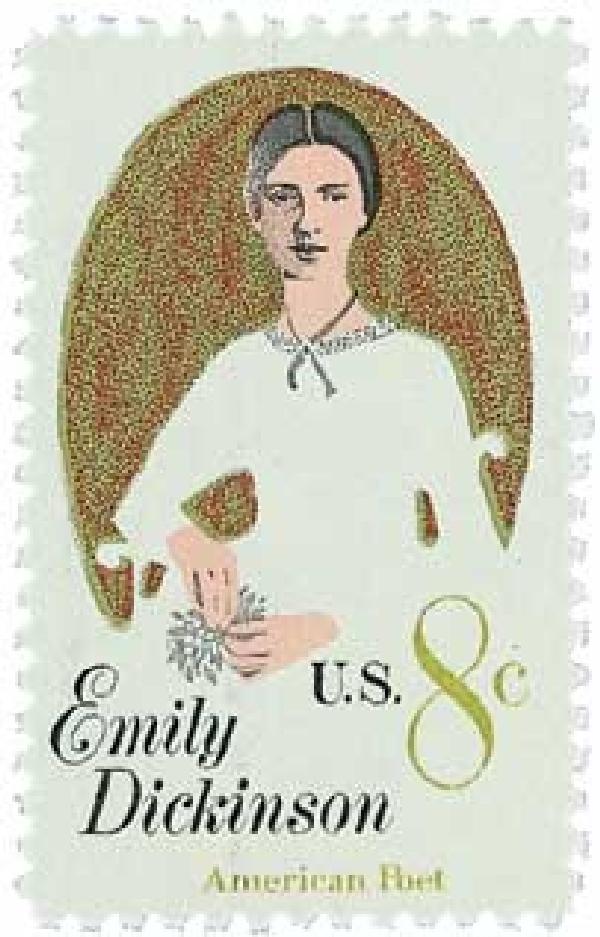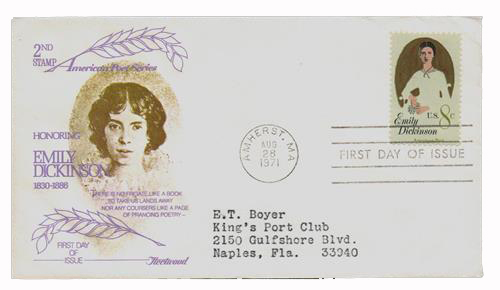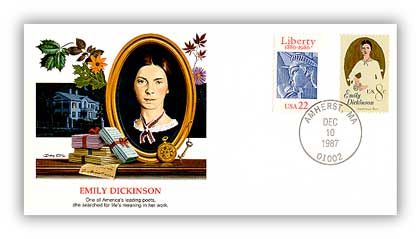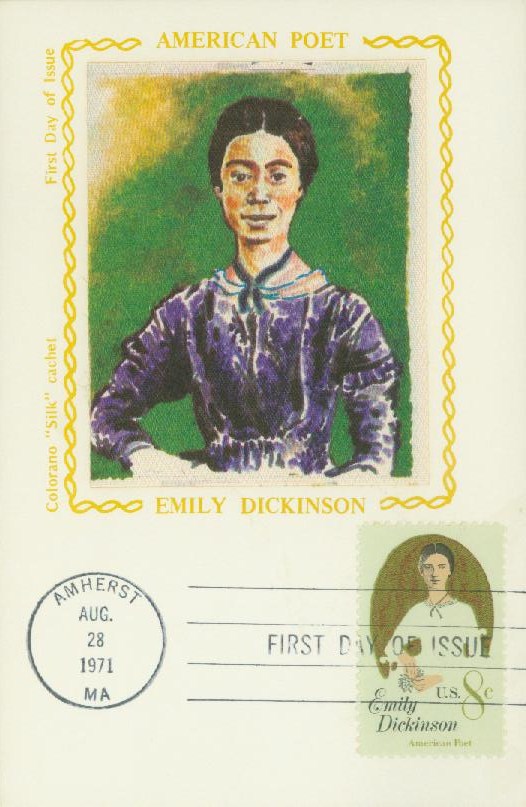Birth Of Emily Dickinson

Poet Emily Elizabeth Dickinson was born on December 10, 1830, in Amherst, Massachusetts.
Dickinson was born into a prominent, but not a wealthy family. Her grandfather had helped found Amherst College and her father was a lawyer. As a child, Dickinson was well behaved and displayed a talent for music, especially the piano.

Dickinson attended Amherst Academy and briefly Mount Holyoke Female Seminary, but returned home after just 10 months. For a while, she enjoyed the local events of the college town of Amherst and took pleasure in household activities, particularly baking. However, by the mid-1850s, her mother was bedridden with illness and Dickinson took on additional household responsibilities in addition to caring for her mother. This gave her little time to leave the house, but Dickinson found refuge in her books and nature.
Dickinson had been writing for some time and in 1858, she began reviewing her earlier poems, rewriting them, and putting them together in books. Between 1858 and 1865, she put together 40 manuscripts containing nearly 800 poems. During this time her family also befriended the editor-in-chief of the Springfield Republican. Dickinson grew close to him and send him dozens of letters and 50 poems, a few of which he published in the paper.

By the early 1860s, Dickinson rarely left the family home. Her doctor at the time diagnosed her with “nervous prostration,” while some later historians believe she might have had agoraphobia and epilepsy. However, this proved to be her most creative writing period. In 1862, she also began corresponding with literary critic Thomas Wentworth Higginson. She had initially sought his suggestions on publishing her work, but he told her to write more before doing that, unaware of how much she had already written. Though they continued to correspond until her death, Dickinson never brought up publishing with him again.

In addition to writing, Dickinson’s other great joy was botany. She tended the family’s garden and put together a collection of 424 pressed flower specimens.
Dickinson suffered many losses over the years – friends, family, mentors, and her dog – that were all reflected in her poetry. She became more reclusive and was rarely seen outside of her home. In fact, when people came to visit, she would only speak to them through the door, but she would also leave gifts and poems for them. Though she saw few people in person, she corresponded with a number of close friends in letters that were highly expressive and imaginative.

Dickinson became more eccentric in her later years, sometimes confining herself to her bedroom for extended periods of time. She grew ill in the mid-1880s and died on May 15, 1886, from Bright’s disease. Only about a dozen of her poems were published during her lifetime. After her death, Dickinson’s younger sister discovered her collection of nearly 1,800 poems and began collecting these for publication in 1890. Her poems were heavily edited before being published. It wasn’t until 1955 that unaltered versions of her poems were finally released.
Click here to read some of Dickinson’s poems.
